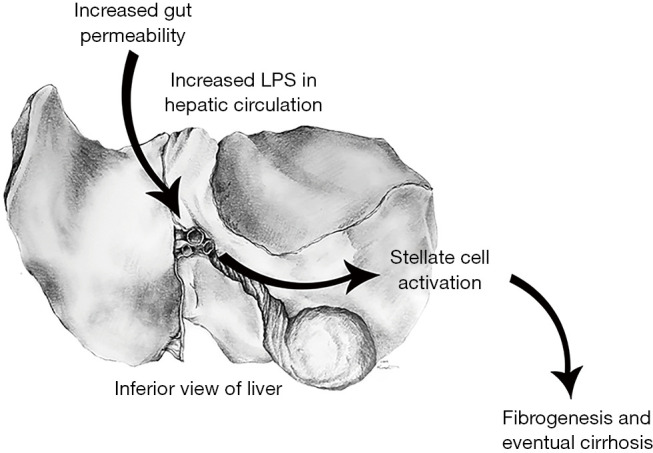Figure 1.

Increased gut permeability: alcohol damages tight junction integrity in the distal epithelium leading to increased gut permeability (1). Increased LPS in hepatic circulation: increased gut permeability leads to increased levels of bacterial lipopolysaccharide in intestinal venous circulation. This blood eventually enters hepatic circulation through the portal vein (2). Stellate cell activation: lipopolysaccharide binds to LPS-binding protein on liver macrophages known as hepatic stellate cells, leading to downstream proinflammatory cytokine and neutrophil recruiting chemokine activation. Activated hepatic stellate cells proliferate and take on a pro-fibrotic role (3). Fibrogenesis & cirrhosis: activated hepatic stellate cells lay down a fibrotic extracellular matrix composed of collagens type I and III, glycoproteins, and proteoglycans (4). LPS, lipopolysaccharide.
